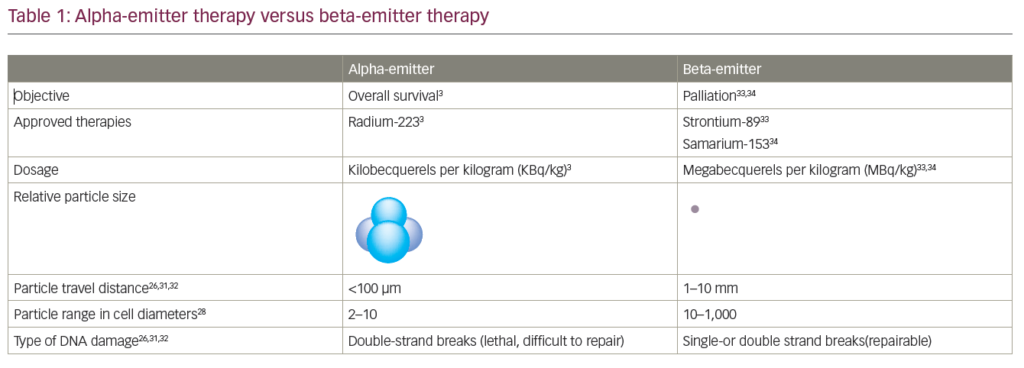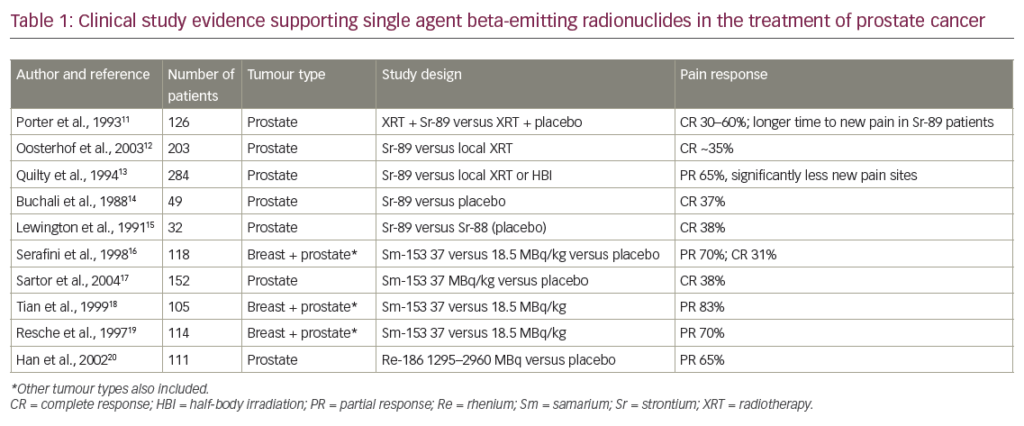Approximately 15–40% of men will develop recurrent disease following an attempt at curative therapy for prostate cancer. Some of them will develop metastases after a median time of 8–10 years. The predictors of metastasis are Gleason score of 8–10, pathological stage T3b-4, nodal invasion and prostate-specific antigen (PSA) doubling time. One can anticipate that about 10% of patients with recurrent PSA will develop systemic progression and that 5% will die from prostate cancer more than 10 years after radical prostatectomy and more than 6 years after the biochemical recurrence.1
In the investigation of PSA recurrence after radical prostatectomy, conventional imaging (bone scan and computed tomography [CT]) has low sensitivity and accuracy, but nowadays we have at our disposal a combination of anatomical and functional imaging with choline or prostate-specific membrane antigen (PSMA) positron emission tomography (PET)-CT and multi-parametric magnetic resonance imaging (MRI). These imaging tools are able to detect the origin of the PSA relapse either in the bone or in the nodes, and hence are offering to prostate cancer experts a tool to detect oligometastatic disease, even at very low PSA levels when the PSA doubling time is short. The oligometastatic status (≤3–5 metastatic sites) is obviously less aggressive than other metastatic genotypes and a different micro RNA profile was described between oligometastatic and polymetastatic disease. When untreated, oligometastatic disease will progress locally and metastasis-directed treatment (MDT) may delay or prevent castration-resistant prostate cancer by eradicating castration-resistant clones. Metastasis-directed treatment might thus postpone the initiation of androgen deprivation therapy (with its documented toxicity) and – hypothetically – may lead to improved survival.
After an initial report by Rigatti et al.2 about salvage pelvic lymph node dissection in low volume metastatic recurrence and another about salvage external beam radiotherapy in hormone-naïve oligometastatic prostate cancer by Berkovic et al.,3 a number of series have been reported on both treatment strategies for oligometastatic disease detected with the novel imaging.4 In a systematic review, salvage lymphadenectomy was shown to yield 5-year biochemical progression-free survival rates in around 30% of patients and 5-year cancer specific survival rates of more than 80%. These excellent results are obtained in a selected group of patients with, preferably, a PSA below 4, a Gleason score below 8 and with pelvic node involvement only. Probably a template dissection is needed since even the best PET imaging today underestimates the extent of nodal invasion. From a meta-analysis on 450 patients treated with metastases-directed therapy for regional and distant recurrences after curative treatment of prostate cancer it was obvious that this approach with either radiotherapy or surgery is promising but still needs validation with a randomised controlled trial.5
Recently however, a randomised phase II trial of 62 patients was published in the Journal of Clinical Oncology.6 The STOMP trial (Surveillance or MDT for OligoMetastatic Prostate cancer recurrence) included patients with biochemical recurrence after radical prostatectomy or radiotherapy or both. They had three or fewer extra-cranial metastases on PET-CT. They were randomised for active surveillance with delayed androgen deprivation therapy (ADT) or MDT. The ADT free survival was 21 months after MDT and 13 months after active surveillance. The toxicity of MDT was very limited and, interestingly, the patients in the MDT arm were more advanced so that the beneficial effect might even have been underestimated.
The newer imaging techniques have changed our concept of prostate cancer metastatic disease as a stage that obviously deserves ADT. Early ADT decreases quality of life, induces metabolic syndrome, never brings cure and does not prolong survival, while MDT will at least postpone ADT and could cure 20–30% of these cases.7 With optimal early imaging, we will detect oligometastases more often and at a stage where cure is indeed not exceptional. There is therefore no reason today to delay imaging in PSA recurrent patients even at very low PSA values when the PSA doubling time is short.















